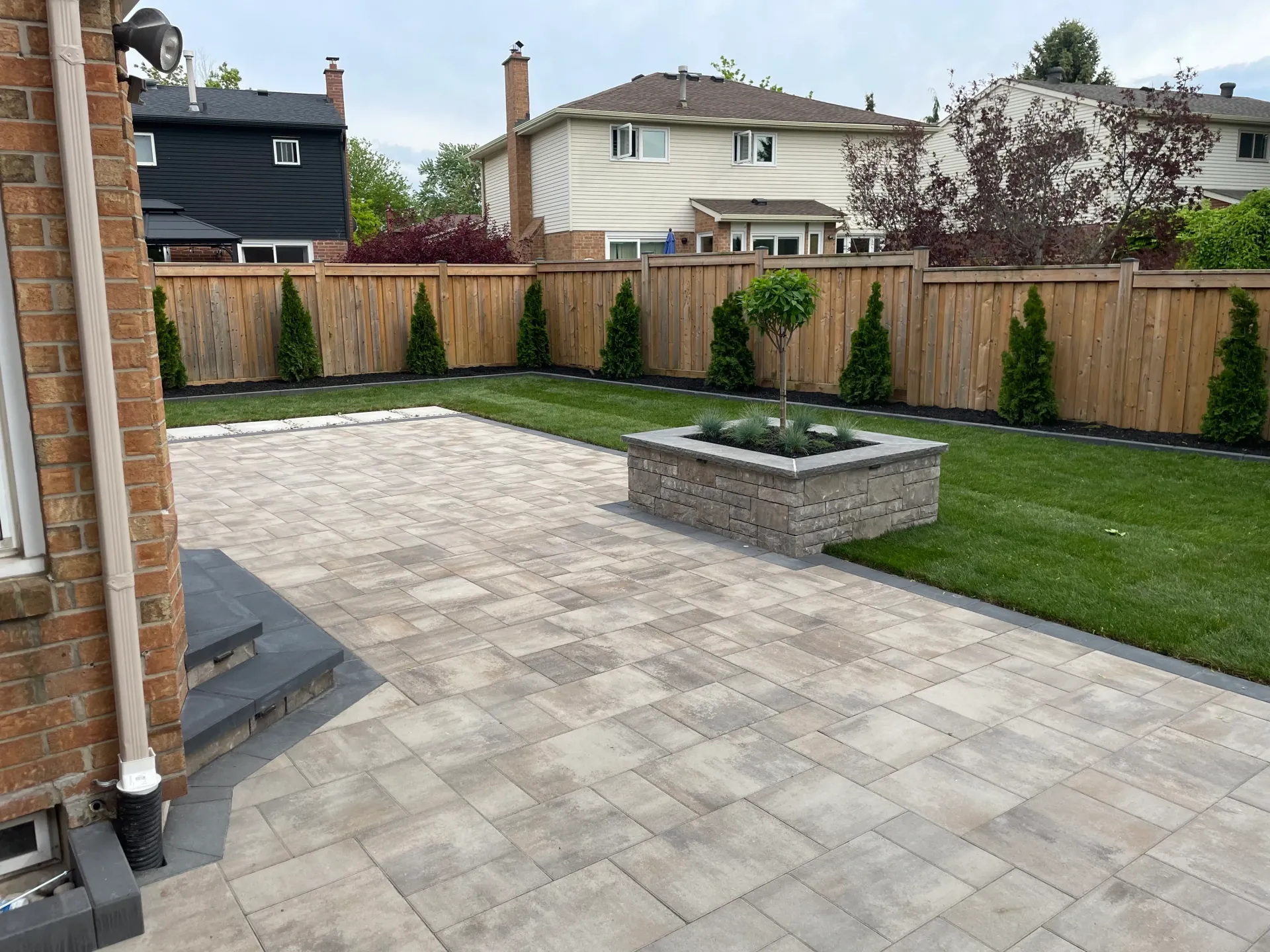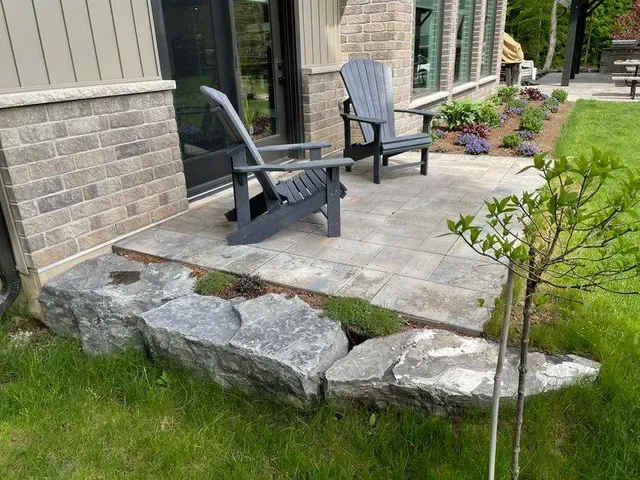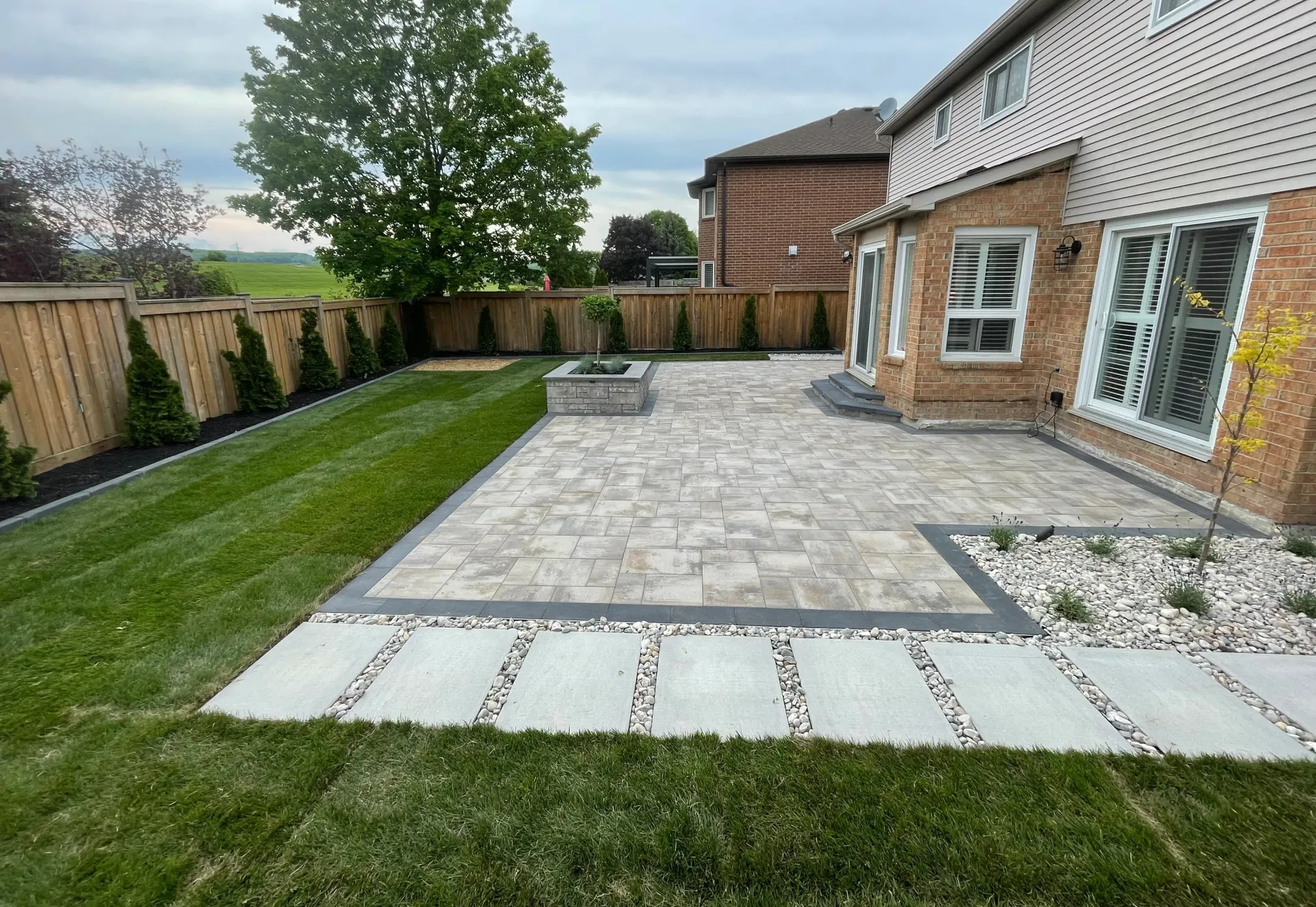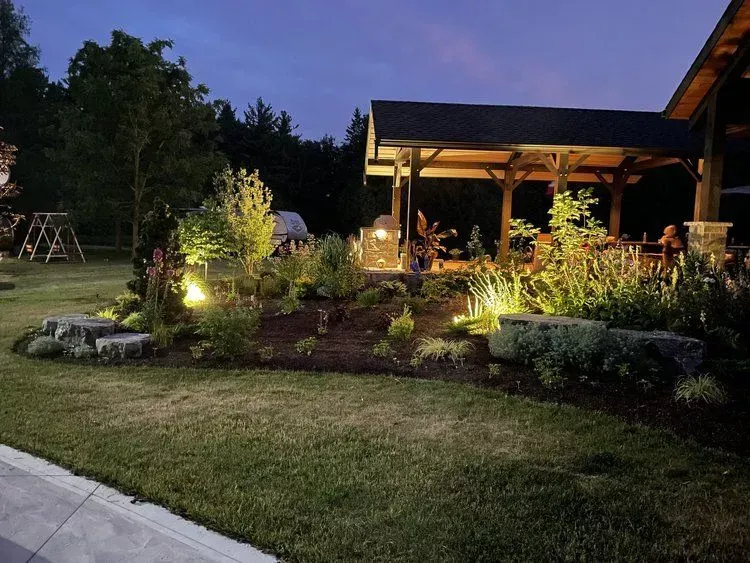Integrating Safe Lighting in Your Backyard
Why Safe Lighting Matters
Outdoor lighting serves two main purposes: aesthetic enhancement and safety. Landscape lighting not only dramatizes garden beds or water features but also significantly contributes to the overall beauty of outdoor spaces. While accent lights can dramatize garden beds or water features, safety lighting ensures that every step, turn, and edge is clearly visible. A well-lit pathway reduces trips; illuminated steps prevent missteps; perimeter lights deter intruders; and glare-free fixtures prevent harsh shadows that can disguise hazards.
According to the National Safety Council, more than one million people are injured each year in falls on the same level, many occurring outdoors at night. By strategically placing lights at ground level, on posts, or on walls, you dramatically reduce these risks while adding value to your home.
Introduction to Safety Lighting
Outdoor lighting is a crucial aspect of home safety and security. It can illuminate dark areas around a property, making it more difficult for intruders to approach undetected. Safety lighting can also improve curb appeal and create a sense of warmth and welcome for visitors. In Canada, outdoor lighting is a great choice for homeowners who want to enhance their outdoor living space while also improving safety. With a wide range of styles and options available, it’s easy to find the perfect outdoor lighting solution to suit your needs and budget.
Start with an Outdoor Lighting Plan
Before ordering fixtures, sketch your outdoor space to scale. Note the locations of:
- -High-traffic areas: patio seating, dining zones, walkway entrances.
- -Changes in grade: steps, retaining walls, slopes.
- -Potential obstacles: garden edging, potted plants, water features.
- -Electrical access points: outdoor outlets, junction boxes.
A simple plan helps you visualize fixture placement and explore different lighting techniques to achieve an inviting and aesthetically pleasing layout. Planning also allows you to customize your lighting setup to suit various preferences, such as adjusting beam angles or color temperatures. It also prevents over-illumination—too much light can create glare and deep shadows, defeating the purpose of safety lighting.
Types of Fixtures for Safety and Ambiance
While you want to minimize list items, it’s useful to identify the primary categories of outdoor lighting for safety:
- -Path Lights: Low-voltage posts (10–18 inches high) that cast a soft pool of light onto walkways. Path lights enhance safety and aesthetics for outdoor walkways, often featuring motion sensors that activate lights during the night.
- -Step and Stair Lights: Recessed into risers or mounted on walls, these eliminate dark steps.
- -Wall-Mounted and Sconce Lights: Affixed to house walls or fence posts to wash patios in ambient light and reduce shadowy corners.
- -Wall Lights: Solar-powered wall lights are wireless, waterproof, and equipped with motion sensors. They are ideal for enhancing security and illuminating outdoor spaces like yards, gardens, and garages.
- -Spotlights and Well Lights: Angled up from the ground to highlight trees or architectural elements without blinding the eye.
- -Garden Lights: These lights enhance landscaping and provide safety along pathways. Garden lights are versatile for illuminating various outdoor features, such as flower beds and decorative elements, and solar options offer energy-saving benefits.
- -Outdoor String Lights: These lights are essential for enhancing outdoor spaces like patios and backyards. Outdoor string lights contribute to creating ambiance and a welcoming environment for gatherings and leisure activities, often compatible with smart home devices and customizable to suit various occasions.
Each fixture type serves a dual role—ensuring safety while contributing to overall ambiance.
Choosing the Right Light Level
Outdoor lighting is measured in lumens rather than watts. As a general guide:
- -Pathways: 5–10 lumens per square foot
- -Steps and Stairs: 10–15 lumens directly on each riser
- -Patio Dining Areas: 30–50 lumens per square foot
- -Accent Lighting: 15–25 lumens aimed at focal points
Choosing the right white light and its versatility in adjustable color temperatures can significantly enhance your outdoor space. The ability to modify the color temperature allows you to set the right mood for any occasion.
Avoid mixing fixture types haphazardly; instead, layer lights so they complement one another. For example, path lights guide footsteps while wall-mounted sconces provide an overhead wash that eliminates shadows. Different lighting levels can create the perfect mood, whether for festive gatherings or relaxing evenings.
Spacing and Placement Guidelines
Even light distribution is key for safety. Space path lights approximately 6–8 feet apart, adjusting for brightness and beam spread. Arrange lights to line pathways and steps, enhancing both visibility and aesthetic appeal. Place step lights 12–18 inches above each stair tread to ensure the entire step is illuminated. When using wall sconces, mount them about 6–8 feet above the ground so the light falls evenly across walking surfaces.
Varying levels of lighting can add dimension to outdoor spaces, transforming their appearance and mood.
Be mindful of glare—lights shining directly into eyes can temporarily blind guests. Angle fixtures toward the ground and use shields or louvers to control beam spread. Opt for warm-white LEDs (2,700–3,000 K) to create an inviting glow without harshness.
Power Sources: Low-Voltage vs. Solar
Two popular options power modern outdoor lights:
Low-Voltage Wired Systems - These use a transformer to step down 120 V to 12 V, making installation safer and wiring more discrete. Trenching or conduit may be required, but performance is consistent even on cloudy nights. LEDs draw very little current, so a single transformer can run dozens of fixtures. Pricing for these systems can vary, so it's important to compare options to find the best value.
Solar-Powered Fixtures - Ideal for temporary or remote installations, solar lights require no wiring. Look for models with high-efficiency photovoltaic panels and lithium-ion batteries for reliable runtime. Keep in mind that heavy shade or prolonged rain can reduce solar performance, so reserve these for well-lit areas or as supplementary lighting. Solar-powered fixtures are often sold in multipacks, providing a convenient option for covering larger areas.
Controls and Automation
Integrating timers, photocells, and motion sensors maximizes efficiency:
- -Timers let you program lights to turn on at dusk and off at a set hour, conserving energy.
- -Photocells detect ambient light, automatically activating fixtures at twilight and shutting them off at dawn.
- -Motion Sensors remain in low-level standby until movement triggers bright illumination—great for steps, entryways, and security.
Using an app can enhance user experience by allowing remote control over lighting features, such as scheduling and automation.
Combining photocells with motion sensors ensures a baseline wash of light with extra brightness when someone approaches. This setup offers easy control, simplifying the management of individual or grouped lighting features. Additionally, lighting can be controlled via smart devices, providing both convenience and enhanced security.
Wiring and Installation Tips
Safety lighting must comply with local electrical codes. Always use outdoor-rated cables (UF or direct-burial) and GFCI-protected circuits. Bury wires at least 6–8 inches deep, or use conduit where necessary. Label junction boxes clearly for future maintenance.
You can purchase our lighting products through a network of showrooms, retailers, and dealers.
If you’re not comfortable with electrical work, hiring a licensed electrician or experienced installer is worth the investment. Professional installation ensures your system is safe, reliable, and covered under warranty, with excellent support to help you confidently invest in landscape lighting for enhancing beauty, safety, and security around your home.
Enhancing Safety with Smart Design
Beyond technical placement, consider how people move through your space. Create clear sightlines from the house to key zones, and avoid planting tall shrubs that block light. Reflective materials—light-colored pavers, metallic finishes on fixtures—amplify illumination, making the most of each bulb. Proper lighting helps people navigate through spaces safely and efficiently.
Also, think about transitions. Where grass meets stone, a low-profile bollard or recessed light prevents tripping and helps brighten the area, enhancing visibility. At garden edges, mulch or gravel “buffers” absorb stray light and mark boundaries. Flexible lighting designs can form various shapes, adding both practicality and aesthetic appeal. Attention to these details ensures that lighting feels intuitive, guiding visitors naturally along safe routes.
Security Benefits
Outdoor lighting can provide numerous security benefits for homeowners. By illuminating walkways, patios, and other areas around a property, outdoor lights can help to deter intruders and improve safety. Motion sensor lights, in particular, can be an effective way to startle potential intruders and alert homeowners to movement around their property. Additionally, outdoor lighting can help to reduce the risk of accidents and injuries by providing safe passage and illuminating potential hazards. With the right outdoor lighting system, homeowners can enjoy peace of mind and improved security.
Energy Efficiency
Solar lights are a great option for homeowners who want to reduce their energy consumption and save money. These lights are powered by the sun and require no electricity, making them a cost-effective and eco-friendly choice. Solar lights are also easy to install and require minimal maintenance, making them a great option for busy homeowners. By choosing energy-efficient outdoor lighting options like solar lights, homeowners can reduce their carbon footprint and contribute to a more sustainable future.
Lighting for Specific Areas
Different areas of a property require different types of outdoor lighting. For example, pathway lighting is essential for illuminating walkways and providing safe passage, while patio lights can help to create a warm and inviting atmosphere for outdoor entertaining. Deck lights, on the other hand, can help to illuminate stairs and railings, reducing the risk of accidents and injuries. By choosing the right type of outdoor lighting for each area of your property, you can create a safe and welcoming outdoor space that meets your needs and enhances your lifestyle.
Maintenance for Long-Term Reliability
Even the best-designed lighting system needs periodic upkeep. Twice a year, clean fixture lenses to remove dust, pollen, and insect debris that reduce output. Check for damaged cables or loose connections, and replace batteries in solar units as needed. Trim overgrown plants that cast new shadows or obstruct photovoltaic panels. Additionally, maintaining lighting accessories is crucial to ensure they continue to enhance the aesthetic and functional aspects of your outdoor space.
Regular maintenance not only preserves safety but also prolongs the life of your investment. A small effort every season can limit larger, costlier repairs down the road.
Design Inspiration and Final Touches
Safety doesn’t mean utilitarian blandness. Combine safety lighting with decorative accents—string lights overhead, lanterns on side tables, and uplights that highlight specimen trees. Lighting can be adjusted for different occasions, ensuring the right mood for celebrations and casual gatherings alike. Subtle layering creates depth: a softly lit path leads to a glowing fire table, framed by shadow-dappled foliage. This interplay of light and dark transforms your patio, decks, and porches into welcoming night-time retreats. Additionally, effective lighting can enhance a balcony, turning it into a charming environment suitable for evening use and social gatherings.
Bringing It All Together
Planning landscape lighting for patio and pathway safety in your yard is a blend of technical know-how and creative vision. Start with a detailed site plan, choose appropriate fixtures, calculate lumen requirements, and decide on power sources. Employ controls for automation, follow proper wiring practices, and maintain fixtures regularly. By considering how people move, what they see, and how light interacts with surfaces, you’ll create a safe, beautiful outdoor environment. Different lighting options suit various needs, enhancing both functionality and aesthetic appeal around your home.
For expert guidance on designing and installing a seamless outdoor lighting system that prioritizes safety, comfort, and style, contact Wilson Hardscape. Their experienced team will ensure your patio and pathways shine brightly—without blinding your guests—so you can enjoy evenings outdoors with confidence and peace of mind. Customers can compare different lighting products to find the best fit for their specific requirements.





